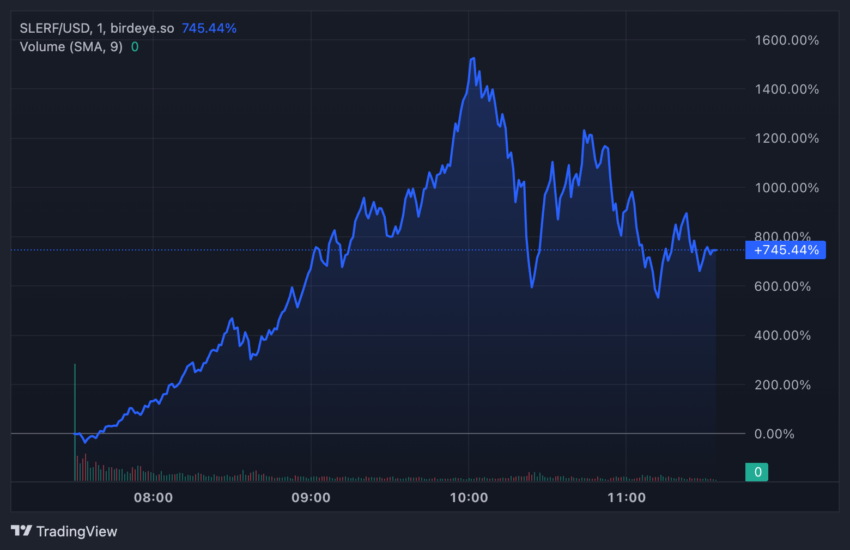ARTICLE AD BOX
Due to operational oversight, the Solana-based meme coin venture, Slerf, disclosed the unintended destruction of all its liquidity and airdrop tokens. Consequently, over $10 million that was amassed in the pre-sale evaporated.
The project had no recourse to mint new tokens or secure refunds.
Meme Coins Raise $100 Million in Presales
Interestingly, despite the financial catastrophe, Slerf’s token price has soared by 745% since its launch. According to Lookonchain, a trader capitalized on this volatility. Consequently, they earned over $3 million in just 12 minutes by astutely trading Slerf tokens.
Initially, this individual purchased 69.74 million Slerf for 9,894 Solana (SOL) worth $1.98 million. Then, they sold them shortly thereafter for 25,001 SOL (~ $5 million), netting a substantial profit.
However, the crypto community has not held back in criticizing the negligence of Slerf’s management and the gullibility of its investors. A pseudonymous user – Ice Bagz’s comment on social media resonated with many.
“Anyone that thought you were capable of performing in any fashion deserved to lose their money,” Ice Bagz wrote.
Read more: 7 Hot Meme Coins and Altcoins that are Trending in 2024
 SLERF Price Performance. Source: Birdeye
SLERF Price Performance. Source: BirdeyeMoreover, this debacle has shed light on the frenetic speculation surrounding meme coin presales. Astonishingly, crypto enthusiasts have invested around $100 million in new Solana meme coins in just the last two days.
“Can’t believe we’ve reached such high levels of degeneracy this fast,” crypto researcher Gumshoe wrote.
Leading this speculative surge are projects like Book of Meme (BOME), Nap (NAP), and Nostalgia (NOS), which have successfully attracted significant capital through this contentious fundraising model.
Particularly, the presale mania peaked with BOME’s listing on Binance, which saw its market cap escalate to over $1 billion within three days of the launch. Such meteoric rises have garnered immense profits for early investors. On the flip side, they have also sparked debates on meme coin presales’ ethical and financial stability.
Consequently, critics have voiced concerns over the meme coin presale model. They argue that it tempts investors with the prospect of quick, substantial returns, overshadowing the substantial risks involved, including rug pulls.
Ethereum educator Anthony Sassano has vehemently criticized the presale model, calling out the folly of investors’ blind trust in these ventures.
Read more: Which Are the Best Altcoins To Invest in March 2024?
“People can do what they want with their money, but sending money to a “memecoin presale” that has a 99.9% chance of rugging is actually just dumb as hell,” Sassano wrote.
Investors are cautioned to tread carefully and conduct exhaustive research before engaging in presale activities. This is due to their high-risk, high-reward nature.
The post How This Meme Coin Project Accidentally Destroyed All Its Tokens, Losing $10 Million appeared first on BeInCrypto.
.png)
 8 months ago
3
8 months ago
3








 English (US)
English (US)